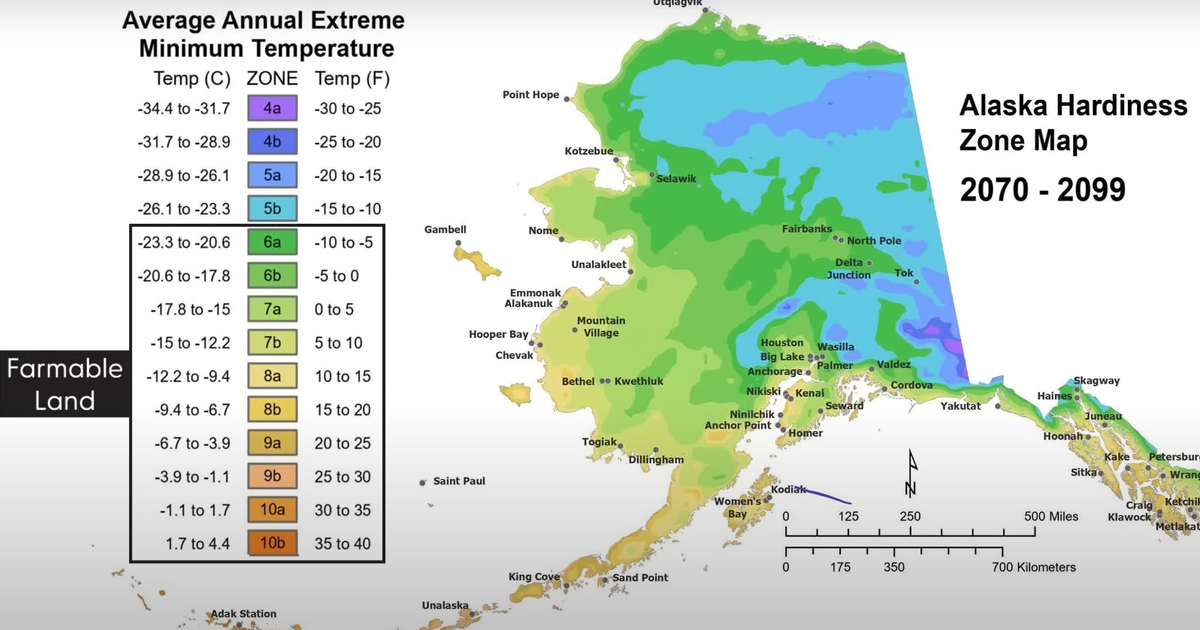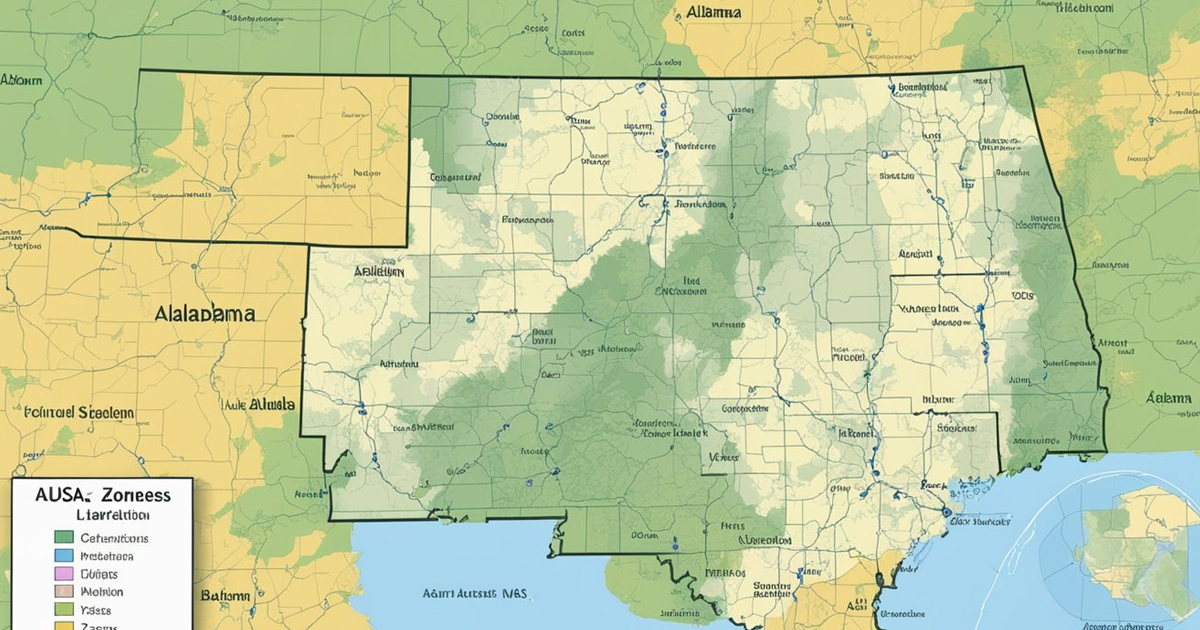
The state of Arizona, spread over varying climatic conditions and topography, uniquely challenges gardeners and farmers. In the state, understanding these varied planting zones is very instrumental in successful gardening and farming according to the climate, using the USDA Plant Hardiness Zone Map. This article explains the USDA Plant Hardiness Zones in Arizona, their meaning, and how they are determined, along with what to expect in each zone as a gardener.
How to Understand USDA Plant Hardiness Zones
The USDA Plant Hardiness Zone Map is used to divide North America into 13 zones, considering the average annual minimum winter temperature. Each zone differs by 10°F, with additional subdivisions of a and b that represent 5°F increments. These zones help a gardener or farmer determine which plants are more likely to grow in their climate.
Arizona’s Unique Climate
The rapid change in elevation across the state of Arizona—from low desert to mountainous terrain—is what makes its climate. This great variation produces extreme hardiness zones: from Zone 5b at the highest levels to Zone 10b in areas that are the hottest parts of the state. These zones, therefore, become quite important for farming and gardening.
Planting Zones of Arizona
The following describes the basic outline of USDA Plant Hardiness Zones in Arizona, listing plants that would do well in each zone and general climate characteristics.
1. 5b: Northern and Higher Elevations
Temperature Range: –15°F to -10°F
- Areas Covered: Northern parts of Arizona, including the Kaibab Plateau and higher elevations of the Mogollon Rim.
Climate Characteristics:
- Cold winters with snowfall.
- Mild to warm summers.
- Short growing season.
Suitable Plants:
- Cold-hardy vegetables: kale, spinach, carrots.
- Perennials: peonies, hostas, and coneflowers. Fruit trees like apples and cherries.
2. Zone 6a and 6b:Higher Elevations and Plateaus
Temperature Range: –10°F to 0°F Places
- Covered: Higher elevations near Flagstaff, the White Mountains, areas on Mogollon Rim.
Climate Characteristics:
- Extremely cold winters with occasional heavy snowfalls.
- Mild summers: Moderately short growing season.
Plants that can be Suitable
- Vegetables including broccoli, cabbage, and peas. Perennial flowers like daylilies, irises, and black-eyed Susans.
- Hardy fruit trees that include pears and plums.
3. Zone 7a and 7b: Central and Northern Arizona
Temperature Range: 0°F to 10°F
- Areas Covered: Central Arizona, including Prescott, Sedona, and Payson.
Climate Characteristics:
- Cool to cold winters; snowfall is occasional.
- Warm summers.
- Moderate growing season.
Suitable Plants:
- Vegetables such as tomatoes, peppers, lettuce, etc.
- Perennials such as lavender, daisies, and coreopsis.
- Fruit trees like peaches and apricots.
4. Zone 8a and 8b: Lower Elevations and Central Valleys
Temperature Range: 10°F to 20°F
- Areas Covered: Central Arizona, lower elevations, including outskirts of Phoenix, Tucson, and Yuma.
Climate Characteristics:
- Mild winters with rare frost
- Hot summers
- Long growing season
Suitable Plants:
- Heat-tolerant vegetables: Eggplant, okra, sweet potatoes
- Perennials: Lantana, salvia, yarrow
- Citrus trees: Oranges, lemons, grapefruits
5. Zone 9a and 9b: Southern Arizona and Desert Areas
Temperature Range: 20°F to 30°F
- Areas Covered: Southern Arizona, including most metropolitan areas of Phoenix and Tucson.
Climate Characteristics:
- Very mild winters
- Extremely hot summers.
- Longer growing season
Plants well-suited for this zone include:
- Vegetables: melons, squash, and beans
- Perennials: agave, bougainvillea, and oleander
- Subtropical fruit trees: figs, pomegranates, and dates
6. Zone 10a and 10b: Hottest Desert Areas
Temperature Range: 30°F to 40°F
- Areas Covered: Hottest parts of southern Arizona, including parts of Yuma and southwestern desert.
Climate Characteristics:
- Very mild to almost non-existent winters
- Extremely hot summers with temperatures usually reaching more than 100°F
- Very long growing season
Plants well-suited for this zone include:
- Heat-tolerant vegetables such as chilies and cucumbers.
- Cacti, succulents and desert adapted shrubs: perennials.
- Tropical and subtropical fruit trees, such as bananas and mangoes, need to be irrigated properly.
Factors that Impact the Planting Zones
The USDA Plant Hardiness Zones are impacted by elevation, adjacency to the water bodies, and the urban heat islands. Elevations play a crucial role in the state of Arizona. Temperature decreases as altitude increases and it gets very hot in the low desert areas.
Practical Tips of Gardening in Arizona
1. Selecting the Right Plants
The first thing to consider would be the kind of plants to be grown. Choose plants suitable for your hardiness zone. Native plants generally work best because they are acclimatized to the local conditions. Note, too, the microclimates in your garden shaded or exposed to more wind.
2. Soil Preparation
The soils range from sandy in arid deserts to heavy clay soils in areas of higher elevations across Arizona. Supplementing the soil with organic matter is very essential to enhance its fertility and its ability to hold water. Raised beds and container gardening are also excellent methods for areas where the soil is particularly bad.
3. Watering Techniques
Water conservation is important for this dry state of Arizona. Good irrigation systems, such as drip irrigation, do not waste any water. Mulching around plants keeps soil moisture intact and prevents the loss through evaporation.
4. Protection of Plants
During winter seasons in the higher elevations, frost protection is sometimes required. Frost blankets or cover with materials to prevent frost conditions. Shade from the intense heat of the day protects plants from heat stress in the lower desert zones.
Conclusion
Successful gardening and farming in Arizona depend on understanding the USDA plant hardiness zones. This is all about explaining a relationship between flora and the local climate conditions. Be it the cold highlands of northern Arizona or the hot deserts of the south, knowing your planting zone shall guide you correctly in decision-making and deliver success in your gardening.







